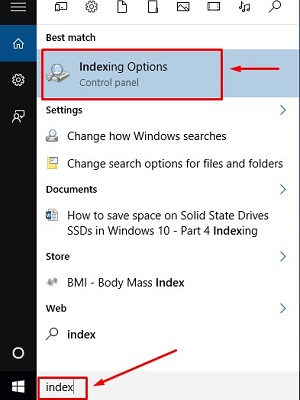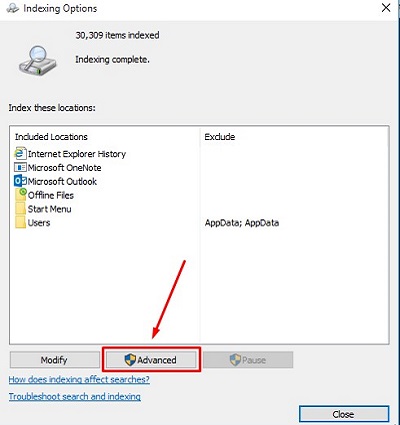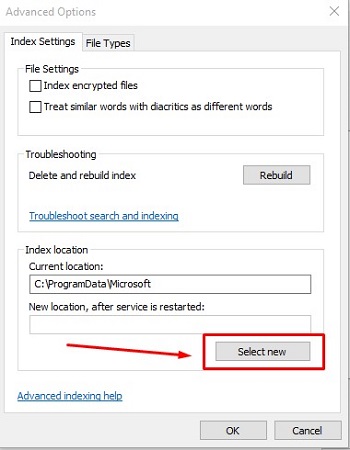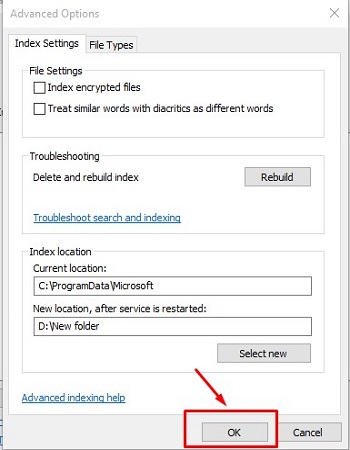Breadcrumbs
How to save space on Solid State Drives (SSDs) in Windows 10 - Part 4
Description: This is a technical article on the topic of saving space on Solid State Drives. Part Four covers moving the index files. The purpose of this article series is to show how to save space on Solid State drives, which are typically smaller than standard hard drives. In this article we will use a secondary hard drive, presumed to be larger than the solid state drive, as sort of a repository, so we may move files from the faster SSD drive to the bigger standard hard drive.
Index Files: The Search Index is one of the best features of Windows 10 - when you search for anything on your computer, it pops up almost instantly. We certainly don't want to disable this feature, so what we will do is move the index to save space. We will be moving this from the C:\ drive (SSD) to the D:\ drive (HDD). This configuration may be different on your system, so make sure the drive letters are right with the way your system is configured.
- Click inside the search bar beside the Start button in the bottom left corner of the screen.

- Type the word index inside the search bar and that will reveal Indexing Options. Select Indexing Options.

- With the Indexing Options box open, click Advanced.

- Click Select new in Advanced Options.

- Navigate to the desired drive, which is drive D: in this case, and click to highlight the drive. Then click Make New Folder and name it whatever you like. Select the newly made folder and then click OK once you are finished.

- Click OK in the Advanced Options box and then restart the computer to finalize the changes.

This article is part 4 of a 6 part series.
Part 1 of this set, Paging File, can be found here.
Part 2 of this set, Disabling Hibernation, can be found here.
Part 3 of this set, System Restore, can be found here.
Part 5 of this set, User Directory Location, can be found here.
Part 6 of this set, Program Directory Location, can be found here.
Technical Support Community
Free technical support is available for your desktops, laptops, printers, software usage and more, via our new community forum, where our tech support staff, or the Micro Center Community will be happy to answer your questions online.
Forums
Ask questions and get answers from our technical support team or our community.
PC Builds
Help in Choosing Parts
Troubleshooting
